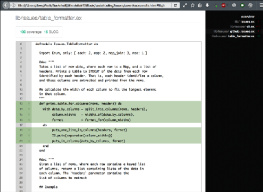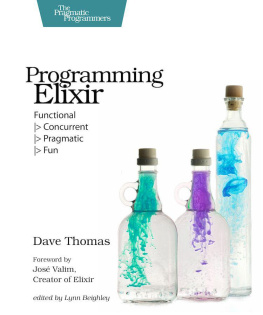Simon St. Laurent - Introducing Elixir: Getting Started in Functional Programming
Here you can read online Simon St. Laurent - Introducing Elixir: Getting Started in Functional Programming full text of the book (entire story) in english for free. Download pdf and epub, get meaning, cover and reviews about this ebook. year: 2014, publisher: OReilly Media, genre: Computer. Description of the work, (preface) as well as reviews are available. Best literature library LitArk.com created for fans of good reading and offers a wide selection of genres:
Romance novel
Science fiction
Adventure
Detective
Science
History
Home and family
Prose
Art
Politics
Computer
Non-fiction
Religion
Business
Children
Humor
Choose a favorite category and find really read worthwhile books. Enjoy immersion in the world of imagination, feel the emotions of the characters or learn something new for yourself, make an fascinating discovery.

- Book:Introducing Elixir: Getting Started in Functional Programming
- Author:
- Publisher:OReilly Media
- Genre:
- Year:2014
- Rating:4 / 5
- Favourites:Add to favourites
- Your mark:
Introducing Elixir: Getting Started in Functional Programming: summary, description and annotation
We offer to read an annotation, description, summary or preface (depends on what the author of the book "Introducing Elixir: Getting Started in Functional Programming" wrote himself). If you haven't found the necessary information about the book — write in the comments, we will try to find it.
Elixir is an excellent language if you want to learn about functional programming, and with this hands-on introduction, youll discover just how powerful and fun Elixir can be. This language combines the robust functional programming of Erlang with a syntax similar to Ruby, and includes powerful features for metaprogramming.
This book shows you how to write simple Elixir programs by teaching one skill at a time. Once you pick up pattern matching, process-oriented programming, and other concepts, youll understand why Elixir makes it easier to build concurrent and resilient programs that scale up and down with ease.
- Get comfortable with IEx, Elixirs command line interface
- Discover atoms, pattern matching, and guards: the foundations of your program structure
- Delve into the heart of Elixir with recursion, strings, lists, and higher-order functions
- Create processes, send messages among them, and apply pattern matching to incoming messages
- Store and manipulate structured data with Erlang Term Storage and the Mnesia database
- Build resilient applications with Erlangs Open Telecom Platform
- Define macros with Elixirs metaprogramming tools
Simon St. Laurent: author's other books
Who wrote Introducing Elixir: Getting Started in Functional Programming? Find out the surname, the name of the author of the book and a list of all author's works by series.

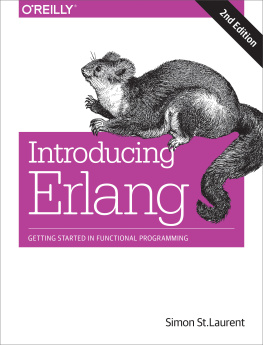
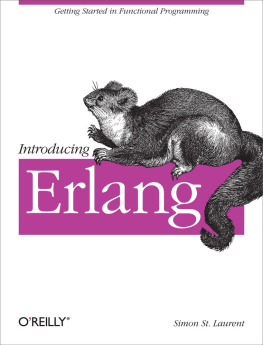
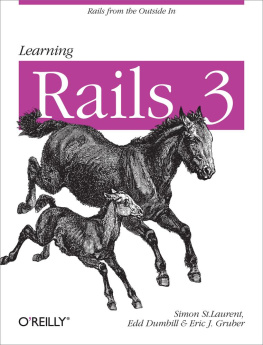

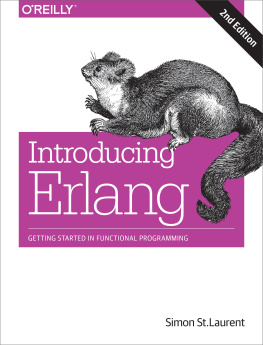
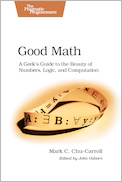
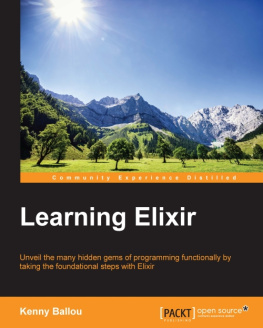
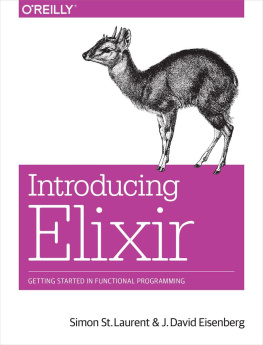
![Dave Thomas [Dave Thomas] - Programming Elixir 1.6](/uploads/posts/book/116896/thumbs/dave-thomas-dave-thomas-programming-elixir-1-6.jpg)


